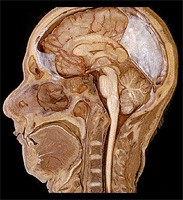|
Calendario |
 |
Abril 2025 |
 |
|
| DO | LU | MA | MI | JU | VI | SA | | | 1 | 2 | 3 | 4 | 5 | | 6 | 7 | 8 | 9 | 10 | 11 | 12 | | 13 | 14 | 15 | 16 | 17 | 18 | 19 | | 20 | 21 | 22 | 23 | 24 | 25 | 26 | | 27 | 28 | 29 | 30 |
|
|
| | |
|
En imagen |
|
Mi primer equipo de anestesia |
|
|
| | |
|
Al margen |
|
¡Bienvenido al Blog de Anestesiología Mexicana en Internet! |
| Anestesiología Mexicana en Internet (AMI) inició en marzo de 1997. Página electrónica oficial de Anestesiólogos Mexicanos en Internet, A.C. Asociación organizadora del Congreso Virtual Mexicano de Anestesiología (www.congresodeanestesiologia.com) |
| | |
|
Sobre mí |
Luis Federico Higgins Guerra
Universidad Nacional Autónoma de México. Anestesiología en Instituto Nacional de Neurología y Neurocirugía 'Dr. Manuel Velasco Suárez. Subespecialidad en Neuroanestesiología (INNN). Autor del libro 'Anestesia Obstétrica' (2008, 2a edición, El Manual Moderno).
»
Ver perfil
|
|
|
| « Entradas por tag: cerebral
|
07 de Agosto, 2009
· Reanimacion Cardiopulmonar |
|
|
 About 450,000 Americans have cardiac arrest annually.1 About 80% of cardiac arrests occur at home, for which the rate of death is at least 90%. More than half the survivors have permanent brain damage of varying degrees. The use of an implantable cardioverter–defibrillator in appropriate patients and the availability of public-access defibrillators have improved survival with an acceptable quality of life.
In-hospital arrests have slightly better outcomes than those that occur outside the hospital, with restoration of circulation in 44% of patients and survival to discharge in 17% of patients. Two randomized, controlled trials showed a positive effect of hypothermia on mortality and morbidity after cardiac arrest.
When patients are comatose after... Continuar leyendo |
|
|
|
publicado por
higgins a las 00:22 · Sin comentarios
· Recomendar |
| |
|

